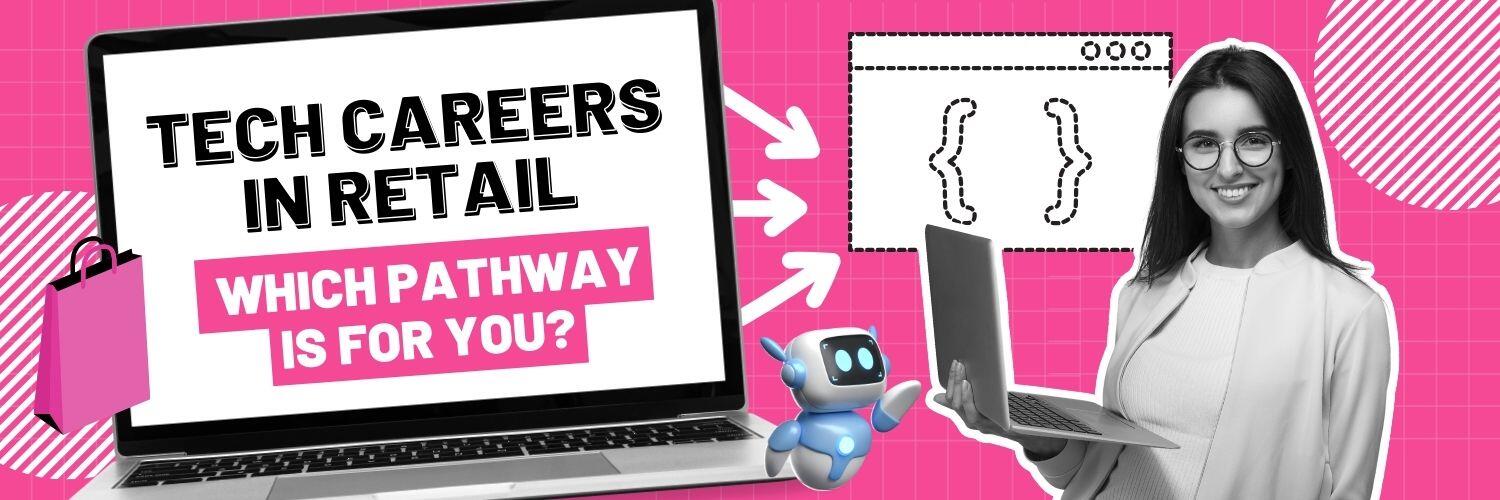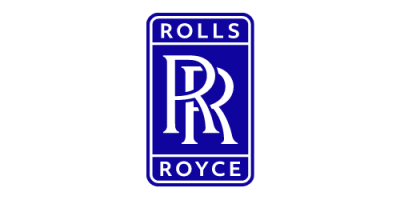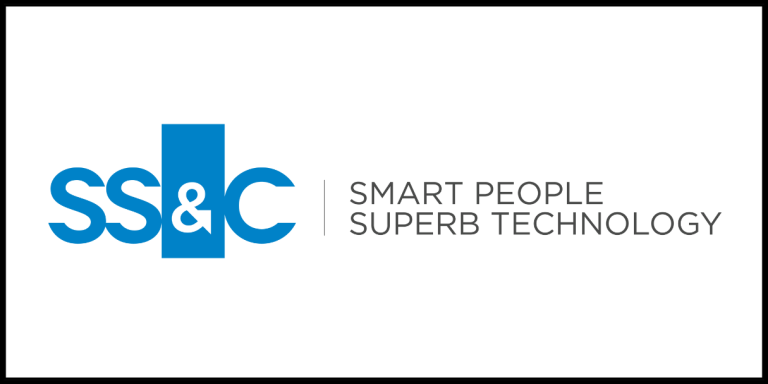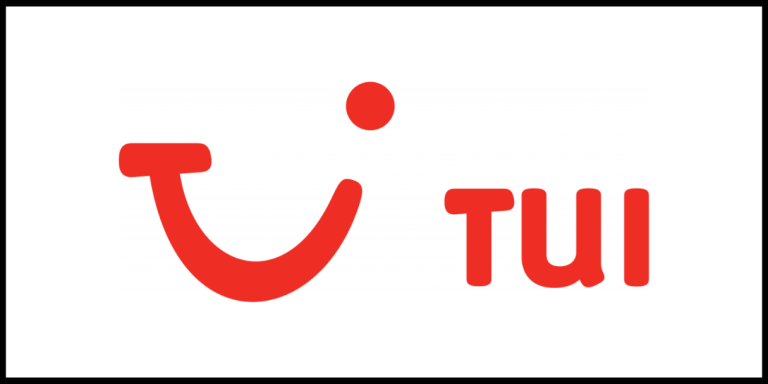In a world where businesses are constantly evolving, forging meaningful connections with customers has become a top priority. In this blog, you can discover the innovative strides made by Capgemini through their groundbreaking Cornershop initiative. We also briefly explore what retail technology is, and some of the opportunities available for a new tech career.
If you’re keen to explore new careers in retail tech or perhaps want to learn more about what is available in this industry, then explore or quick links below.
How has technology transformed retail businesses?
Through artificial intelligence and machine learning, retail businesses have been able to use cutting-edge technology to gain valuable insights into customer behaviours, preferences and trends. But this involves analysing large amounts of data to create those unique experiences for every customer? Suppose you have an urgent query you want to resolve ASAP. Well, you no longer have to wait for business hours or wait in long queues to call customer service as most retail websites have incorporated AI chatbots that can help you out online. Overall, technology on the business side of retail offers organisations the ability to grow, become more cost-efficient and create loyal relationships with their customers.
HOW HAS TECHNOLOGY EMPOWERED BUYERS?
Shopping can be fun! Whether you’re running a last-minute errand or looking for the perfect gift, finding the right items that suit your needs, budgets and delivery methods, it is now much easier than ever before. The global marketplace is at your fingertips, where you can order items from online shops based in another country, pay seamlessly and securely through automated currency conversions, and have the items delivered straight to your door. As technology continues to evolve, the future of retail is becoming even more exciting and efficient for all of your buying and selling needs.
WHERE DOES AR AND VR COME IN?
Speaking of efficiency! Long gone are the days that you need to pull out your measuring tape to see if furniture fits in your space or if an item of clothing may suit you. Many retail apps have incorporated AR and VR technology so you can see these items fit in your space using simply your camera phone. How cool are that?! This not only means increased efficiency for businesses but also more satisfied customers who are less likely to return a product because they can make informed buying decisions.
A Spotlight on Capgemini’s ‘Cornershop’
This is a perfect example of how Capgemini made the Cornershop more exciting and engaging!
Capgemini along with The Drum and SharpEnd came together to create an immersive store in London called ‘Cornershop’, inspired by the everyday British corner store, but taking convenience shopping to the next level through digital innovations. It’s considered a sentient store in the way that it is constantly learning through data and relies on global research to improve its products and customer experience.
It might sound absurd, but it’s true! This data can even be shared anonymously with customers. The Cornershop used mobile phones as remotes throughout the store, which allowed shoppers to engage with displays and receive experiential offers tailored to their needs, so they found exactly what they were looking for. This means safer shopping for people with certain allergies or intolerances, and better sustainability by leading people directly to the products they need. Once you’re done, you can simply leave the store whilst a receipt is sent to your phone for the items you’ve picked up. So simple!
This is possible due to an array of cameras positioned from multiple angles that track and monitor every customer using computer vision, light detection and ranging (LIDAR) and photogrammetry. All of these work together to monitor your behaviour as you shop, whilst an internal computer continuously analyses this data through machine learning and AI to gather insights that can help to create a shopping experience tailored to you. So if you love retail and customer experience, but also like data and technology – this could be the type of project you could become part of in your career. Invent and discover new ways we can elevate retail.

What do Software Developers in retail tech do?
Profile: Whether you’re thinking of working in a startup or enterprise, Software Developers play a crucial role in retail tech. Their expertise lies in designing, developing, and maintaining software applications that power various aspects of retail operations. Software developers in retail tech are driving efficiency and competitiveness in the retail landscape, empowering businesses to thrive in the digital era.
Profile: Whether you’re thinking of working in a startup or enterprise, Software Developers play a crucial role in retail tech. Their expertise lies in designing, developing, and maintaining software applications that power various aspects of retail operations. Software developers in retail tech are driving efficiency and competitiveness in the retail landscape, empowering businesses to thrive in the digital era.
They are at the forefront of creating innovative solutions that:
- Optimise inventory management, enhance customer experiences, and streamline overall business processes.
- Build user-friendly e-commerce platforms to develop sophisticated point-of-sale systems, software developers in retail tech use their coding skills to transform complex ideas into tangible, practical solutions.
- They also collaborate closely with data analysts to extract meaningful insights from vast amounts of customer data, enabling retailers to tailor personalised recommendations and targeted marketing strategies.
Examples of two retail-based Software Developer Roles
AI Retail Software Developer:
Are Software Developers who use AI technology to build cool systems for use in-store. They also create computer programs that can look at tons of info about what people have been searching for and purchasing, then figure out what they might buy in the future. This helps organisations better decide on prices, inventory, and what products to develop. These Software Developers also create smart robots that can talk to customers and assist them straight away with online shopping and even in-store! So even though they work behind the scenes, AI Retail Software Developers make shopping both online and in-store more enjoyable for everyone.
AI Retail Software Developer:
As a VR and Augmented Reality software developer, you’ll combine expertise in both artificial intelligence and virtual/augmented reality technologies to create awesome applications that redefine how customers can interact with products and brands. VR Developers can make awesome fake worlds where customers can walk around and try things out such as testing new products.
NO FUSS, FURNITURE PICKING WITH IKEA!

IKEA FOR EXAMPLE: IKEA utilises mobile app technology to help shape the retail space in the IKEA Place app. Here, customers can view and virtually place true-to-scale models of furniture into their homes through Augmented Reality using their phone cameras, and browse collections or shop at the same time without having to leave their house. Making shopping for home furnishing easier and faster without breaking a sweat. If you’ve never thought about getting into iOS or Android Development then why not? Some of the key languages you’ll be using include Swift (iOS), JavaScript and Java, Kotlin (Android) and React Native (both operating systems).
What do Full-Stack Developers in retail tech do?
Profile: A Full-Stack Developer plays a key role in leading a team and is responsible for all aspects of a coding project, encompassing both the front-end (client-facing) and back-end (server-side) development. You could say they tend to have their hands full as they oversee the end-to-end management of mobile apps, e-commerce websites, or database systems.
Here’s a load down of what you might need to know or learn to become a fully-fledged Full-Stack Developer!
💻 Front-end Programming: Allows FSDs to create the user interface and interactive elements of websites or applications that are visible to the business and customers. Fundamental knowledge of HTML, CSS, and JavaScript is essential for this.
📁Back-end Programming and Databases: In the context of retail tech, these skills are crucial for tasks related to building and maintaining e-commerce platforms, including product catalogue functionality, secure payment gateways, and inventory management systems for order processing. Proficiency in languages like Python or Java for server-side logic, and understanding of SQL for data retrieval and management.
🐛Debugging and Troubleshooting: This task ensures the final project launched is smooth and usable by other developers, clients and customers. Ability to identify and resolve bugs using frameworks like PHPUnit, Jest, and Mocha, ensuring smooth application functionality.
🗄️Version Control Systems: This task requires the implementation of Git for collaborative development, managing code repositories and tracking changes.
🔐 Cybersecurity: Understanding of cybersecurity concepts to identify and fix vulnerabilities in code, ensuring business and customer data security. Also handling high traffic and implementing secure systems.
💡Key prospect skills to have: A keen eye for design and attention to detail are highly beneficial, especially when tackling larger tasks that require problem-solving and decision-making abilities.
GETTING PERSONAL WITH NIKE
Example: Nike is known globally for their athletic shoes and apparel, but a big part of its business is done online. Meaning Full-Stack Developers are a huge part of the business. Here are a few things a Nike Full-Stack Developer might be involved with:
- Maintaining user experience by creating tools to customise products, such as with Nike By You, and giving customers access to virtual try-ons that can help them with their purchases.
- Utilise machine learning and AI to analyse customer data that can help tailor marketing messages and product recommendations for individuals.
- They are also involved in content management, working closely with marketing to build content management systems they can easily update.
- Work on new technologies that involve VR that can enhance Nike’s digital brand.
What do Data Scientists and Data Analysts in retail tech do?
Profile: You might not need a lab coat for this particular role but you will have your hands full with data science in retail tech! Data Scientists and Data Analysts roles both have super important tasks that handle the management of big data! This team is tasked with producing insights using the data to help the wider team make informed decisions and improve business performance within the retail industry. But wait, what’s the difference between the two you may ask? We can answer that for you.
What does a Data Scientist 🥼in retail tech do?
In short, a Data Scientist’s role can involve:
- Collecting large data volumes and using advanced statistical techniques for analysis.
- Identifying trends and patterns in data to provide useful insights to the wider team.
- Analysing sales transactions, customer interactions, online behaviour, and inventory levels.
- Employing advanced data analytics to understand customer preferences and optimise supply chain operations.
- Using Machine learning and AI skills to create predictive models and algorithms.
(Predictive models anticipate customer behaviour, enabling personalized recommendations and campaigns for retailers.)
TARGET PREDICTING PREGNANCIES?!
Example: As of 2022, US-based retail brand Target has accumulated a team of 400 engineers focusing on data science, to develop their AI which recommends products based on search and demand. To do so, Target uses machine learning to analyse shopper data to create a model that could predict when a customer is likely to be pregnant. It looks at patterns in their browsing and buying behaviour, and they are then recommended products that may be suitable for their new needs amongst an array of other items, intentionally done to protect their privacy and ensure a comfortable shopping experience.
What does a Data Analyst 🔍 do?
Data Analysts on the other hand are involved in exploring and managing data analytics through reports and showcasing performance against key business targets. This may involve [but is not limited to]
- Managing data analytics through reports, and tracking performance against business targets.
- Developing dashboards and data visualization tools for real-time insights.
- Data identification, collection, and migration across systems using tools like SQL and Excel.
- (We also recommend) Learning Python as it’s crucial for efficient data management and structure creation.
Overall, a keen interest in data, analytics and statistics is an essential part of not only enjoying these roles but also thriving in them! We want that for you 🪴.
KROGER MAKING SHOPPING LESS OF A CHORE
A great example of a retail brand that uses data analytics to make intelligent business decisions is Kroger. How do they use it?
- Maintain product shelf life expectancy – so that products are always fresh on the floor and reduce product wastage.
- Predict seasonal items and quantity of orders. This helps to maintain stock margins.
- Understand foot traffic better by using counting tracking systems and predictive analysis to forecast services. They look at customer behaviours such as who and what are they shopping for, and in what quantities.
- This data also helps determine the layouts of the stores so customers can find what they’re looking for more efficiently.
What do Product Managers in retail tech do?
Profile: They are responsible for overseeing the development, implementation, and improvement of software products and solutions. So good organisation, collaboration and communication skills are top-tier qualities to have in this role. No day is ever boring because Product Managers work closely with cross-functional teams, including software developers, designers, data analysts, and marketing teams, to define product requirements, set objectives, and prioritise features based on customer needs and market trends.
Some of their responsibilities include:
- Conducting market research to identify new opportunities and customer pain points.
- Defining product roadmaps, and ensuring that the products align with the overall business strategy.
- Gathering feedback from customers and stakeholders helps in refining the product and making data-driven decisions to drive growth and success.
- Responsible for seeing the entire product life cycle from start to finish.
- Interact with customers and collaborate on developing new objectives and technologies to help the business grow 🪴
You can watch Chloe Shih’s video here to learn more about what she does as a Product Manager in tech.
🤔 Do Product Managers need to know how to code?
Although knowing how to code is not required to become a Product Manager, when it comes to working with data analytics, some Product Managers typically use SQL to create reports or retrieve information. But it could also be super helpful for you to have a foundational understanding of coding, which could include learning the basics of Python or Data & SQL. Having some knowledge of technology that is used in the tech stack can massively make a difference in the long run – especially when working and communicating with a variety of tech teams.
Product Managers DO need to know about ✨design ✨ added
User Experience Design (UX Design) plays a crucial role in the responsibilities of a Product Manager because the quality of the user experience will determine how customers perceive and interact with the product. For example, if customers find an app difficult to use or navigate, they are likely to switch to alternative options – which is not great for the business! So, it is in the hands of the Product Manager to oversee the development and testing of the product whilst prioritising the user experience as a central part of the process, to ensure the final product is ready for succession when it is launched.
